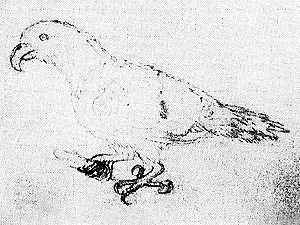This very large but still fully volant species is known for quite some time; it is known only on the basis of subfossil bones that were recovered from several sites on some of the Tongan islands, including ‘Eua, Foa, Lifuka, and Tongatapu. The species was finally named in 2020. [1]
In life, this species must have reached a length of more than 50 cm, making it one of the largest pigeons at all, only exceeded in size by the New Guinean crowned pigeons (Goura spp.).
The giant Tongan Pigeon died out shortly after the arrival of the first Polynesian settlers at around 2800 years BP.. [1]
*********************
References:
[1] David W. Steadman; Oona M. Takano: A new genus and species of pigeon (Aves, Columbidae) from the Kingdom of Tonga, with an evaluation of hindlimb osteology of columbids from Oceania. Zootaxa 4810(3): 401-420. 2020
*********************
edited: 22.08.2022


